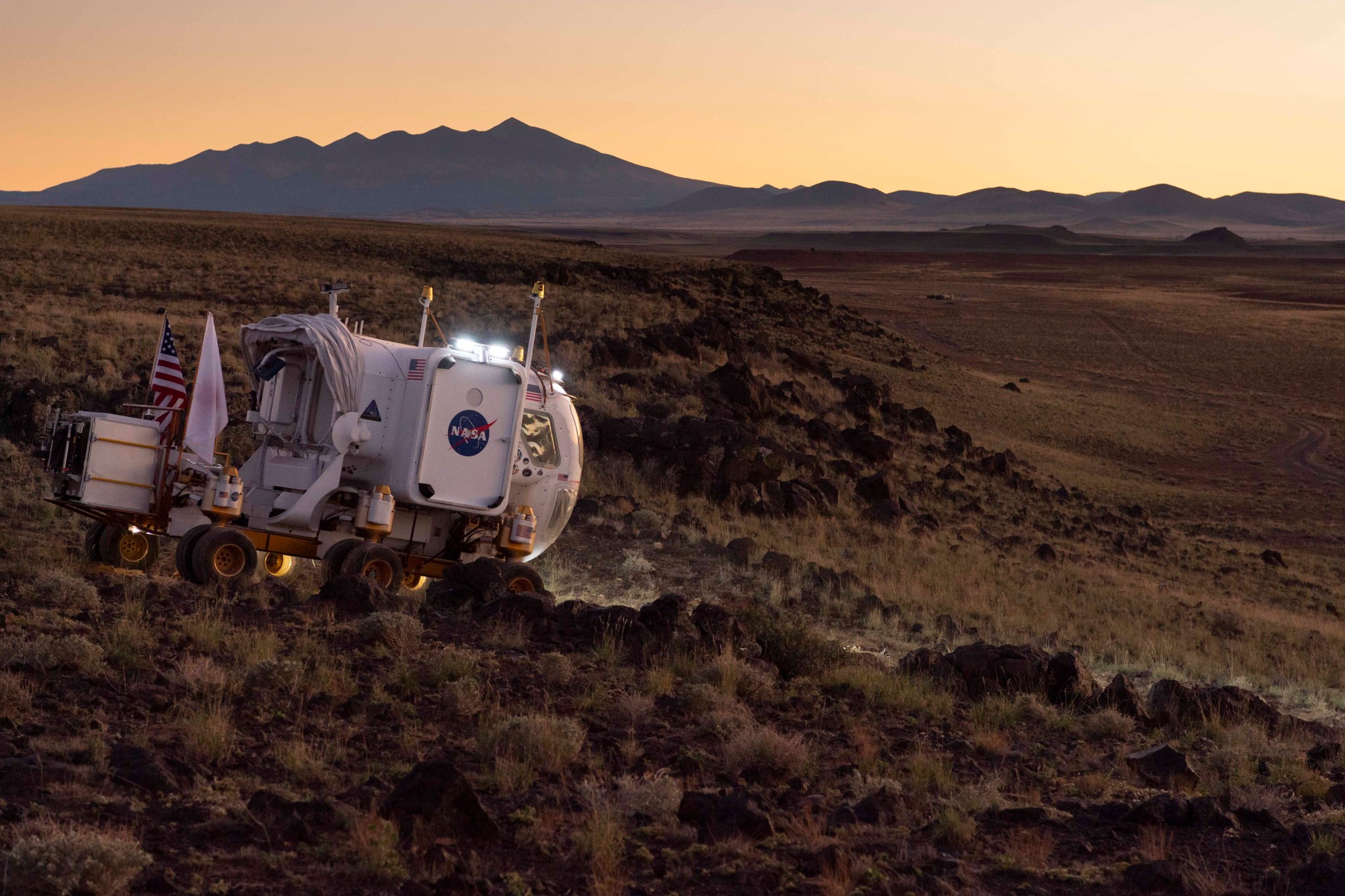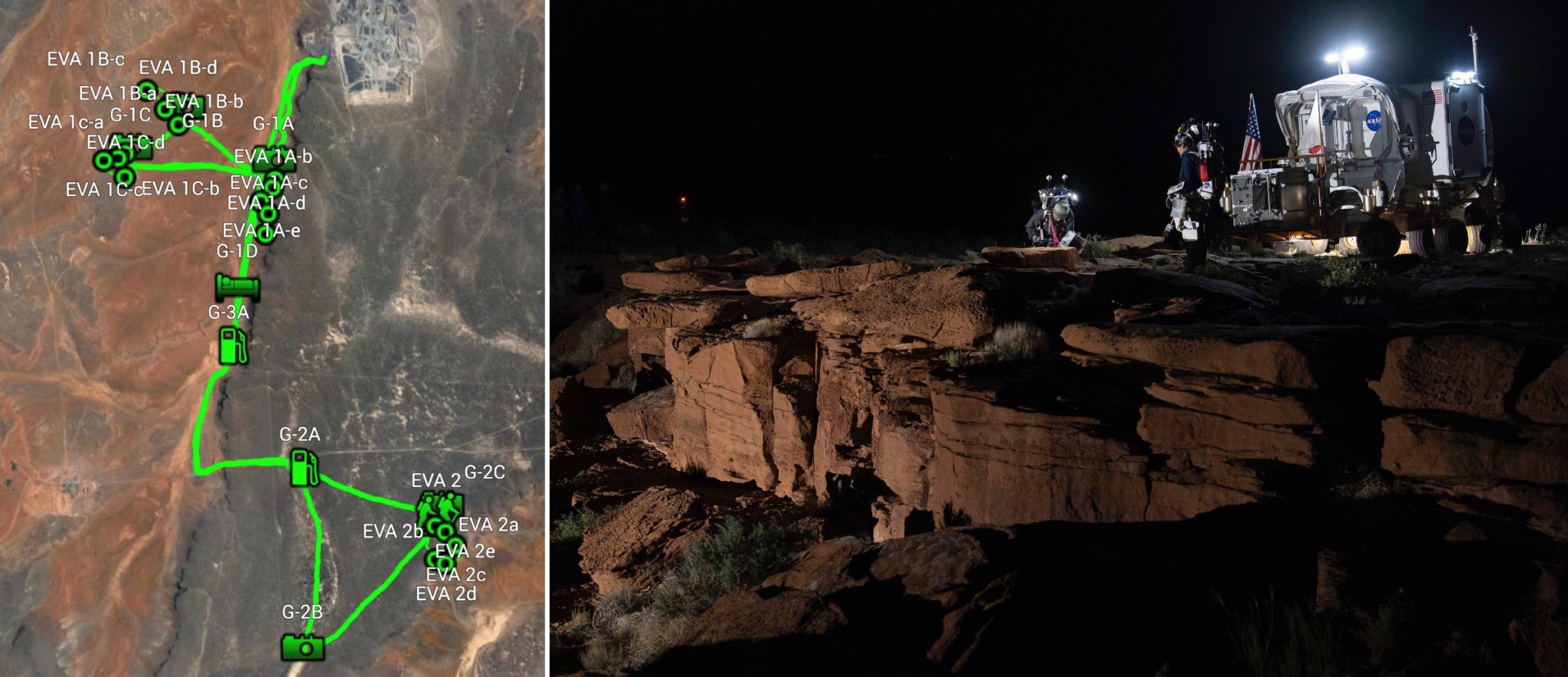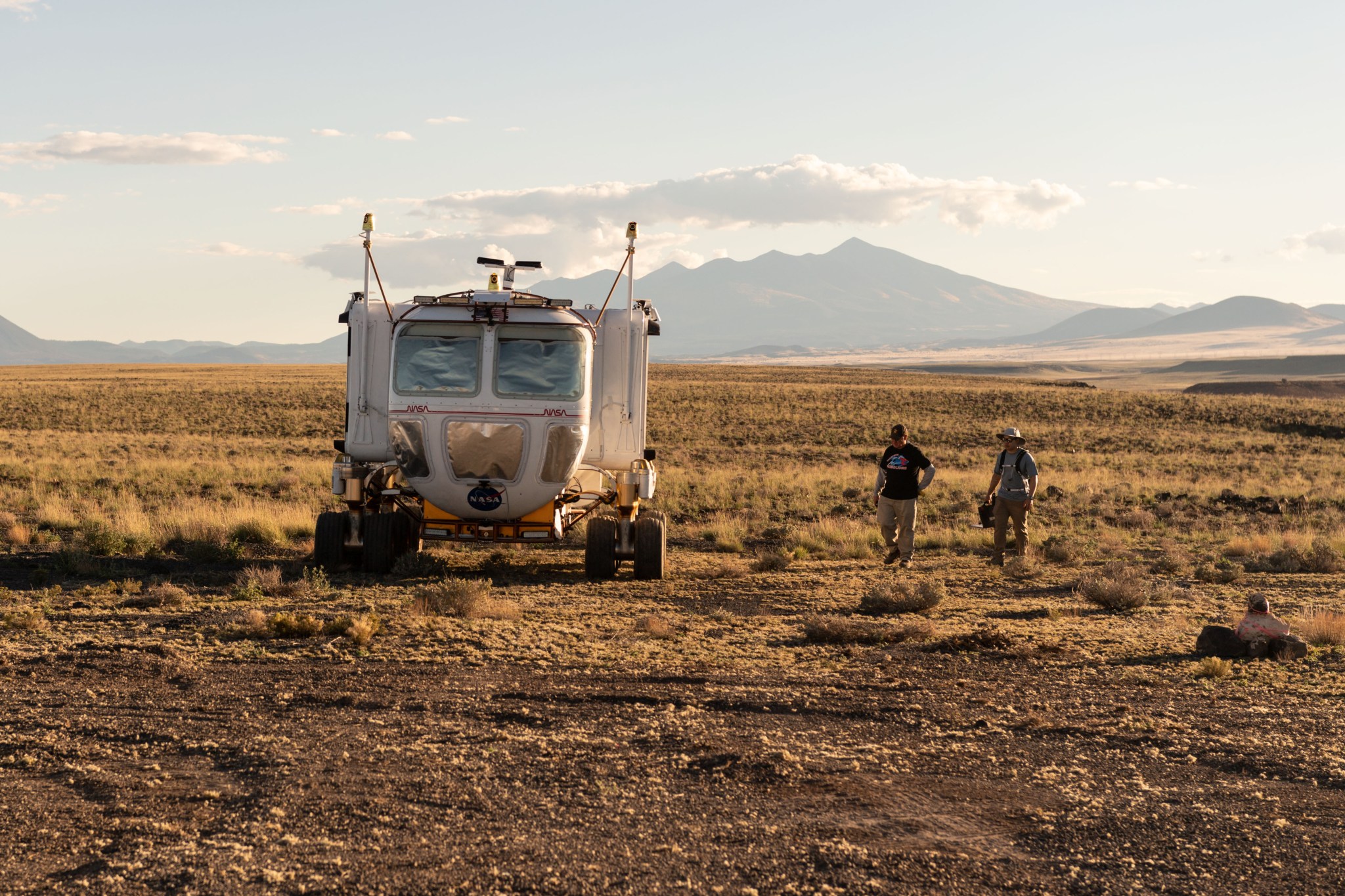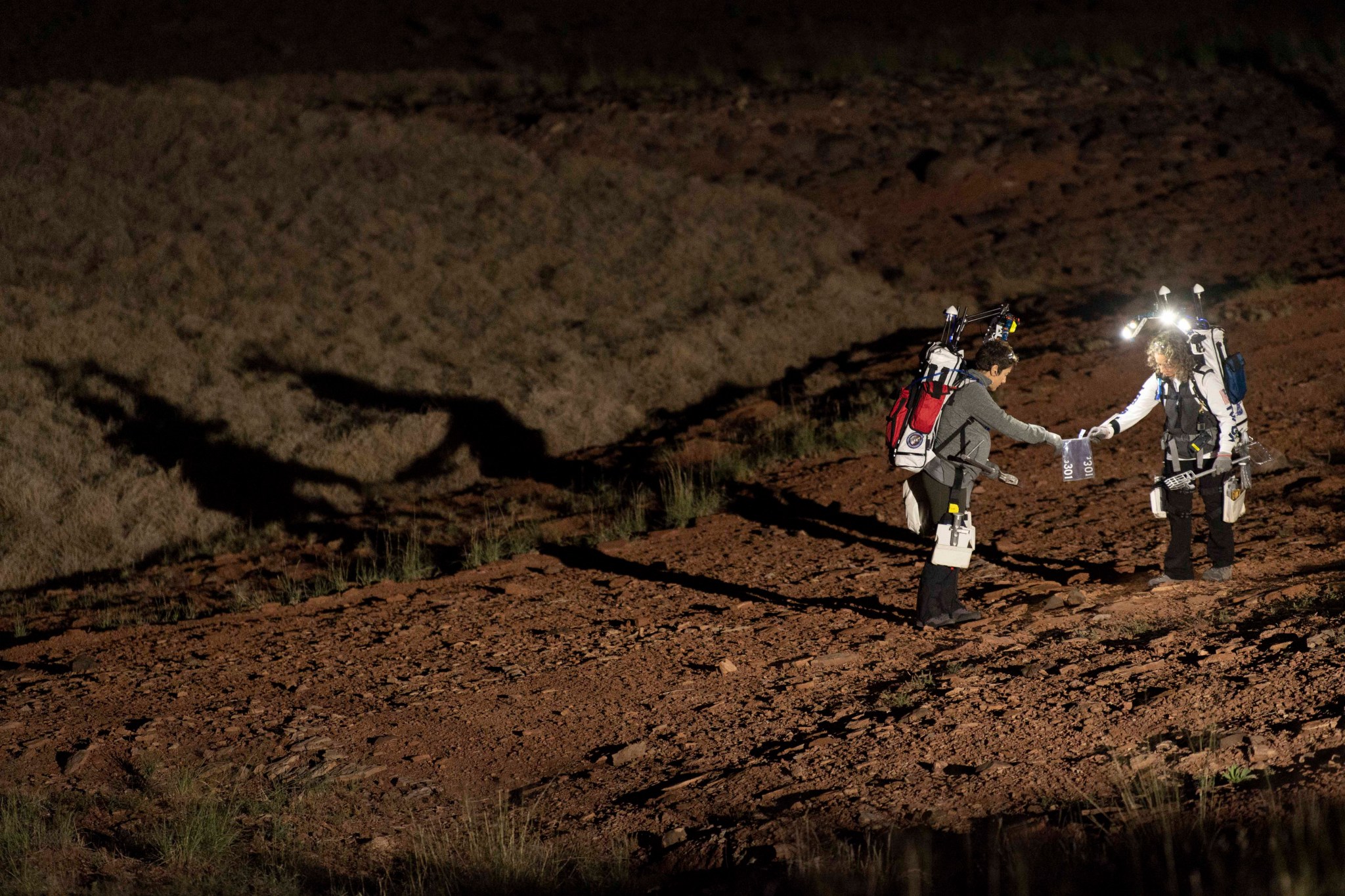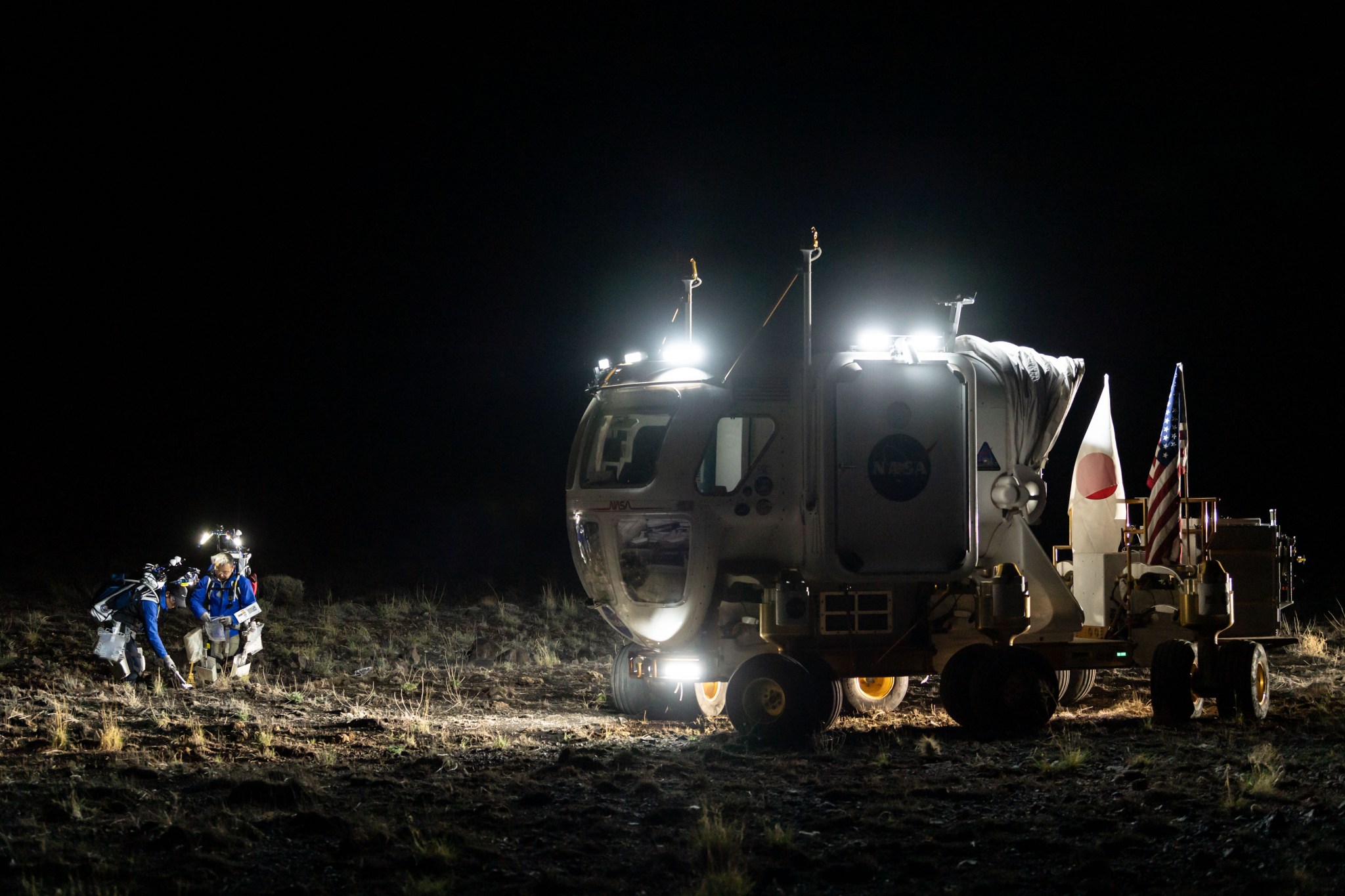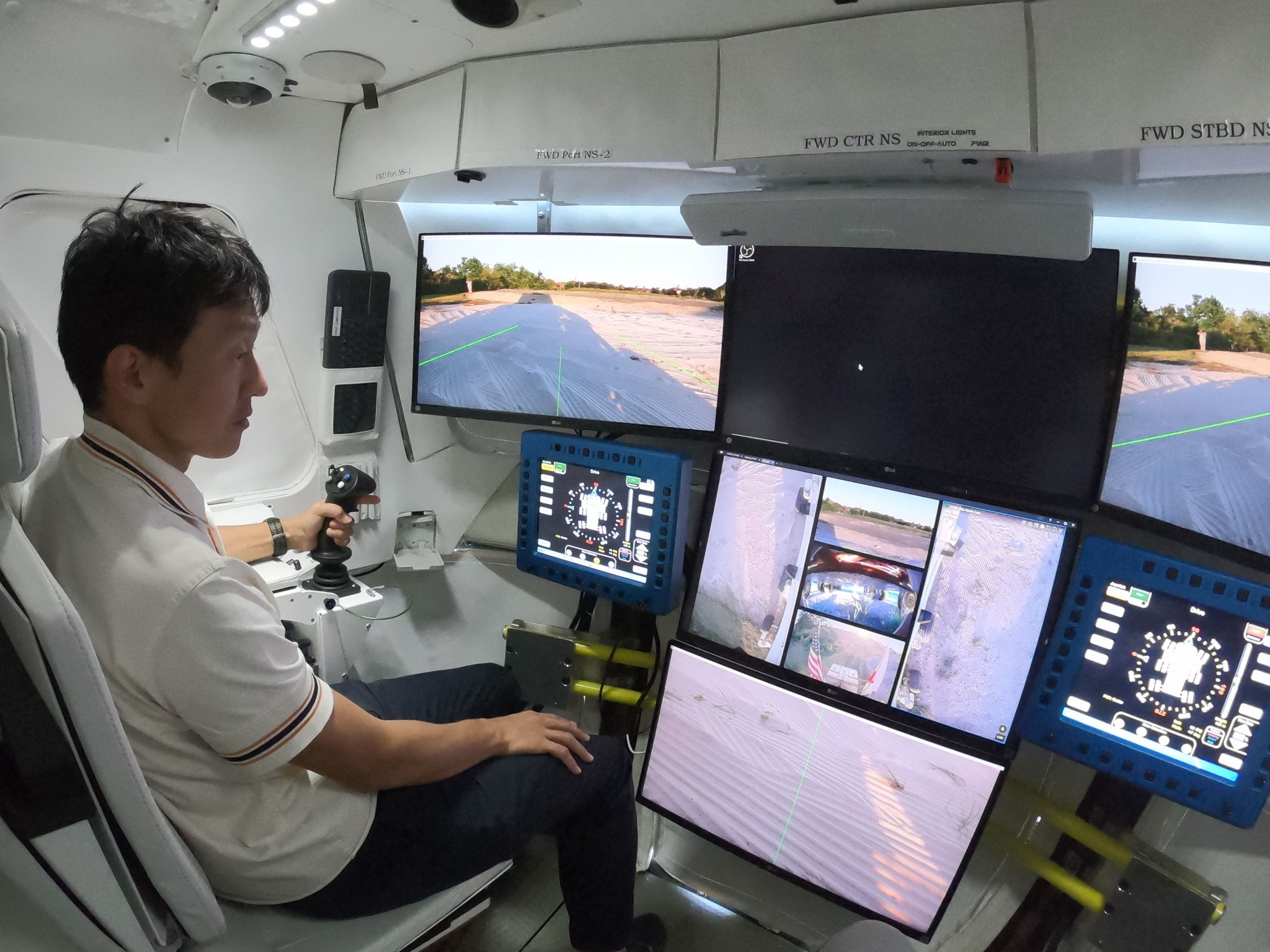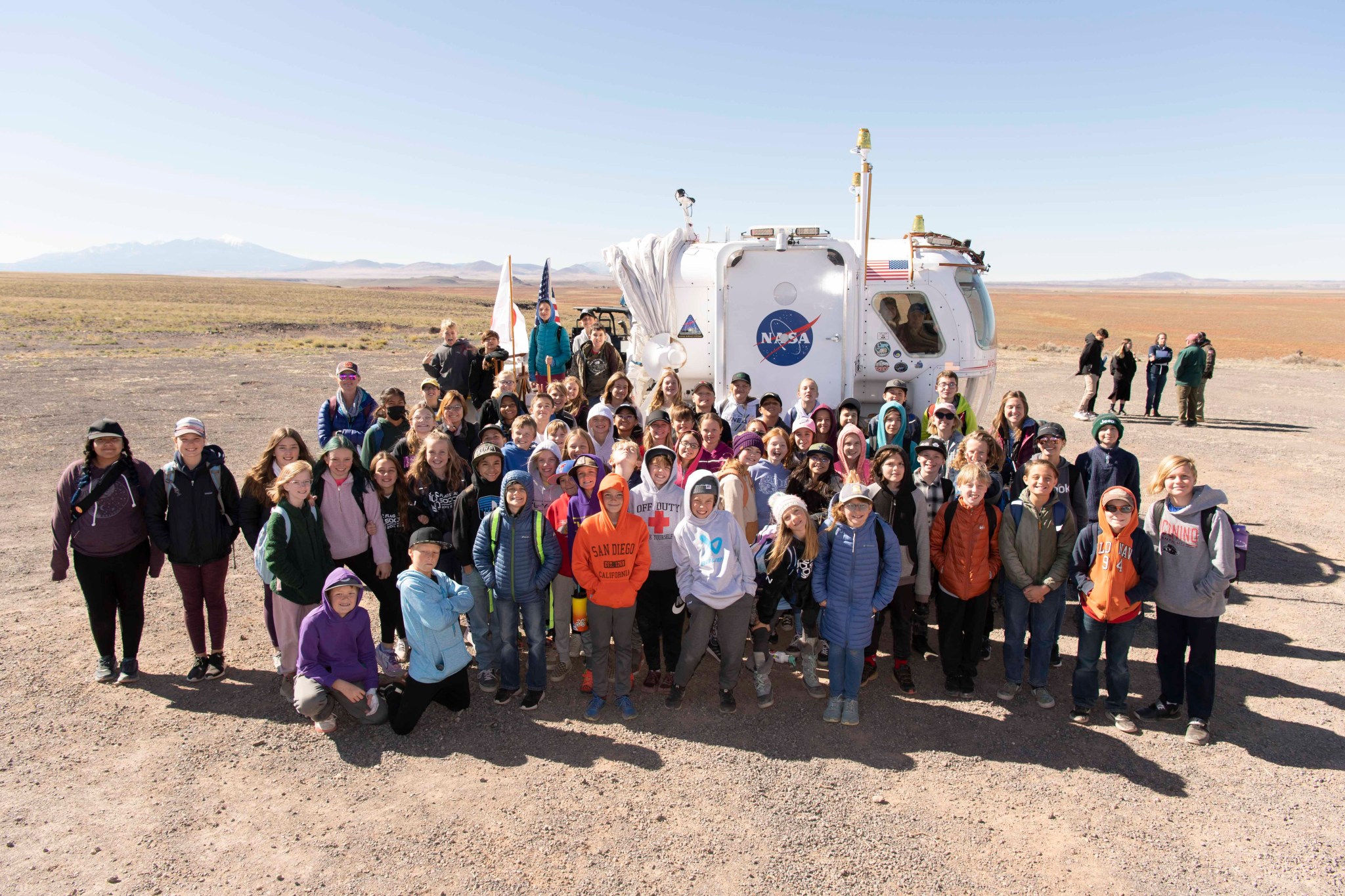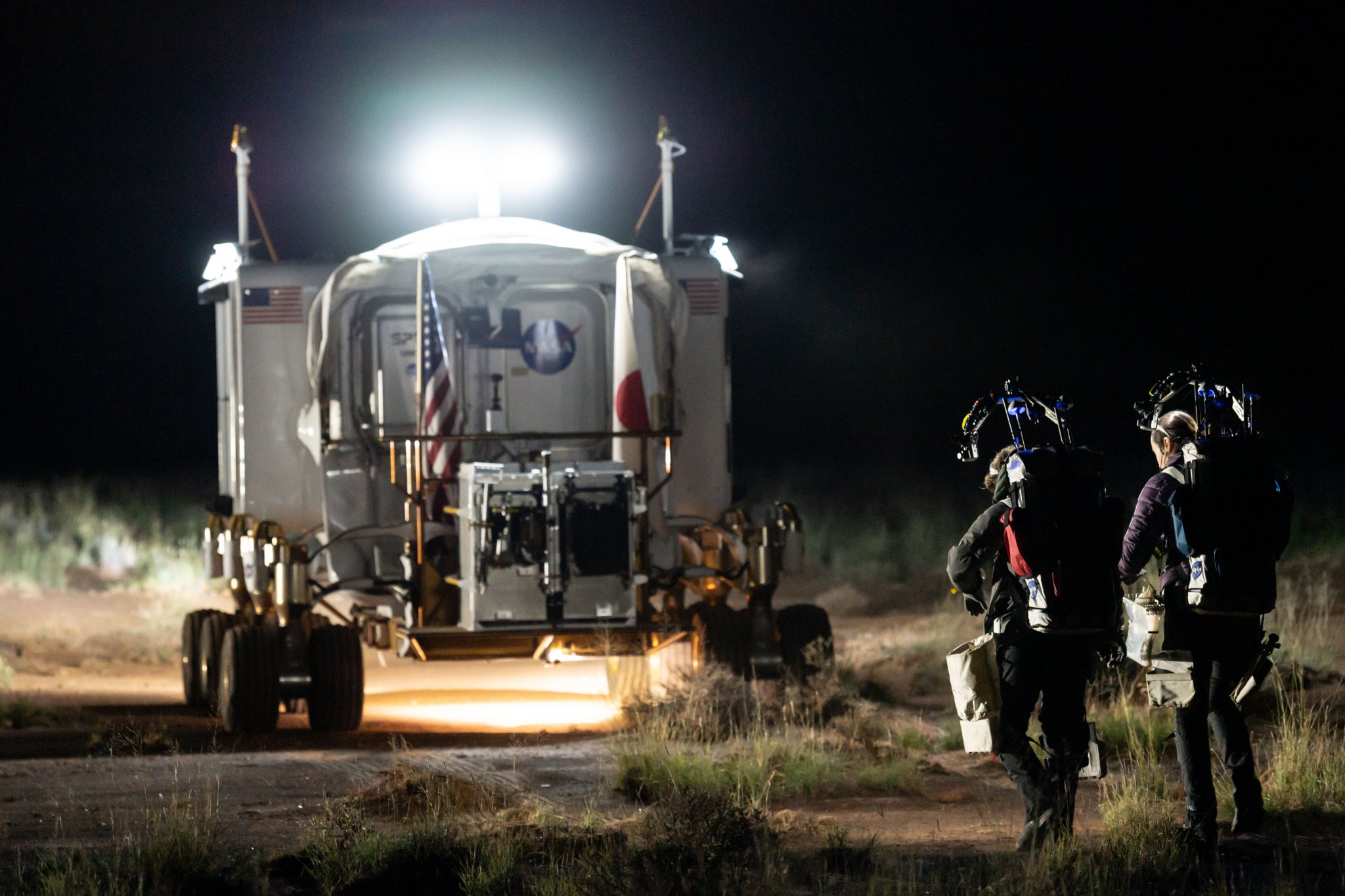Forty miles north of Flagstaff, Arizona, lies a remote lava field called Black Point Lava Flow consisting of rocky terrain, sparse vegetation and, at night, very limited light pollution. This dark, desert landscape recently served as a simulated lunar environment for Desert Research and Technology Studies (D-RATS), where scientists, engineers, and researchers from NASA and Japan Aerospace Exploration Agency (JAXA) gathered to test pressurized rover operations for future Artemis missions.
A pressurized rover will enable farther and longer lunar surface expeditions by providing a place for astronauts to live and work as they traverse the area near the lunar South Pole. As part of a study agreement with NASA, JAXA may provide a pressurized rover for Artemis missions. D-RATS allowed JAXA to work with NASA’s prototype rover to inform potential rover designs and capabilities.
Together, the two agencies conducted D-RATS from Oct. 11 – 22, consisting of one engineering run and three separate missions. Two different crew members from NASA and JAXA participated in each mission which involved living, working, and driving in a pressurized rover over the course of three days.
Creating the Roadmap
Each crew followed a traverse, or route, along a map. The planned traverses, which were each about 9.3 miles (15 km) long, focused on geologically interesting areas that the crew could explore, analyze, and report about to mission control.
Several stops along the traverse allowed the crew to take photos from inside the rover and analyze the terrain without exiting, park overnight to sleep or recharge the rover, and conduct simulated moonwalks. The traverses and stops along the way were used to test the schedule and planned operations for the pressurized rover to inform the development of operations for future Artemis missions.
Driving
On the first day of each mission, the crew began at basecamp, which served as a home base for the rover and a communications outpost. As the sun set, the crew drove away from basecamp and began their mission, maintaining communications with D-RATS team members in the field and mission control at the agency’s Johnson Space Center in Houston, throughout. To accurately test the crew’s ability to drive the rover, they navigated without support from mission control.
The crew began their drive with the rover’s windows covered to practice only relying on the outside cameras in the event of a contingency affecting visibility.
After driving for about two hours, the crew reached the location for their simulated moonwalk.
Exiting the Rover for Moonwalks
The crew exited the rover and put on backpacks designed to mimic the weight and shape of the life support elements of spacesuits astronauts will wear on Artemis missions. Carrying tools for analysis and sample collection, the crew navigated to the moonwalk stops, in a loop, along the traverse. At each spot they described what they saw to mission control and collected photos and samples.
As the crew led the way on foot, nearby team members teleoperated the rover to follow them, responding to direction from mission control. Periodically the order was switched to have the rover lead the crew. A powerful lamp was used to simulate the Sun and was aligned in relation to how the crew moved to always originate from the West. These challenging lighting conditions emulated what Artemis astronauts will encounter at the lunar South Pole.
The crew practiced using the rover to light the path ahead and survey the surrounding area by asking mission control to turn the rover and its light source in the directions they needed. They also experimented with using the rover to block out the artificial sun in order to better see the worksite in front of them.
Following the moonwalk, the crew returned to the rover, then drove to a spot nearby to park overnight. The following day, they resumed driving along the traverse to reach their second moonwalk location, where they would repeat the process of the first day. On this second day, the crew used views from the rover windows to drive.
Spending Time Inside the Rover and Returning to Basecamp
Inside the rover the crew prepared meals, exercised, categorized and studied samples they collected during moonwalks, and filled out questionnaires. The surveys provided valuable feedback that NASA and JAXA can use to create improved designs and operations for living and driving in the rover.
The morning after the second night of moonwalks, the crew drove back to basecamp, where they exited the rover and completed their mission.
Engaging the Public
At the end of D-RATS, NASA hosted a media and outreach day for students, reporters, and elected officials, including State Senator Theresa Hatathlie, Flagstaff Mayor Paul Deasy, and representatives from Congressman Tom O’Halleran and Senator Kyrsten Sinema’s staff. More than 190 middle school and college students spoke with D-RATS team members to learn about the mission and explore the inside of the rover. In the afternoon, members of the media gathered to hear remarks from Flagstaff Mayor Paul Deasy and D-RATS mission managers, conduct interviews, and capture imagery of the rover.
Looking to the Future
When NASA sends a pressurized rover to the surface of the Moon, it will serve as astronauts’ living and working space, their life support system, and their means of transportation for up to a month at a time. Testing operations now is a critical part of developing the best possible design and technologies. In the coming months, NASA and JAXA will compile lessons learned and data to inform rover designs, lunar traverse planning, and concepts of operations for future Artemis missions.
Learn more about NASA’s analog missions:
























